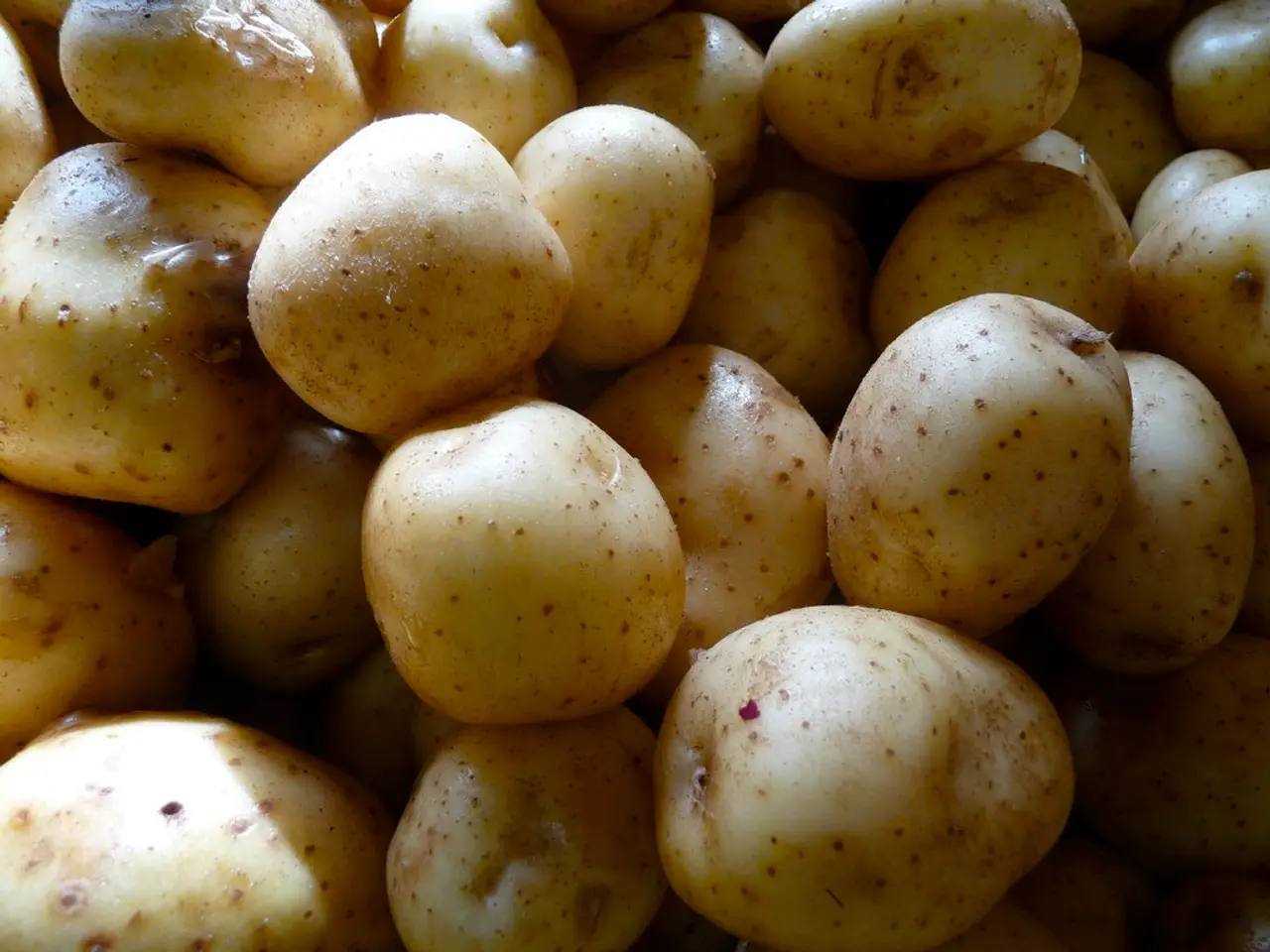Guide on Potato Cultivation
The humble potato remains the nation's favourite vegetable, and growing them at home is a rewarding and enjoyable experience. Here's a comprehensive guide to help you grow your own potatoes, whether in a garden or a container.
Types of Potatoes to Grow
There are three main types of potatoes to grow: first early, second early, and maincrop. Each type has its unique characteristics and growing requirements.
- First Early potatoes mature fastest (around 10-12 weeks) and give you "new potatoes." They are great for containers or small garden spaces since they don’t need a long growing season.
- Second Early potatoes mature a bit later (about 13-16 weeks) and produce larger tubers than first earlies. They can be planted shortly after first earlies and harvested as "baby potatoes" or left to mature a little longer.
- Maincrop potatoes are the slowest to mature (typically 18-20 weeks) and yield the largest crops intended for storage through winter. They need deeper soil or larger containers and are planted after the risk of frost has passed to ensure a long, warm growing period.
How to Grow
- Prepare Soil or Containers
- Use loose, well-draining soil rich in organic matter.
- Containers should be at least 12 inches deep for tuber development.
- Ensure good drainage to avoid rot.
- Seed Potatoes
- Use certified seed potatoes to avoid disease.
- Cut larger seed potatoes into pieces with at least one eye per piece and let them dry for a day before planting.
- Planting
- Plant seed potatoes 3-4 inches deep.
- Space first and second earlies about 12 inches apart; maincrop potatoes, 15 inches apart.
- In containers, plant 2-3 seed pieces per container with sufficient soil.
- Care
- Hill soil around stems as plants grow to encourage tuber formation.
- Water consistently but avoid waterlogging.
- Use mulch to retain moisture and control weeds.
- Fertilize with balanced fertilizer as needed.
- Harvesting
- First earlies can be harvested when plants flower, usually 10-12 weeks after planting.
- Second earlies are ready around 13-16 weeks, harvested before the foliage dies back.
- Maincrop potatoes are harvested after 18-20 weeks once the foliage has died.
- Variety Choice (Examples)
- First earlies: varieties like Pink Fir Apple or Red Duke of York.
- Second earlies: varieties like Cara or Charlotte.
- Maincrop: varieties like Russet or Yukon Gold are common for baking or roasting, while red or waxy types are good for boiling or salads.
Growing in containers or gardens is similar except containers need more frequent watering and the soil should be sufficiently loose and deep. Containers also allow you to grow potatoes even in small spaces or on patios.
Harvesting and Storage
When harvesting potatoes, choose a dry day, cut the plants to the ground, and dig up the potatoes, discarding any bruised or damaged ones. Home-grown maincrop potatoes should not be washed before storage. All light must be excluded to avoid potatoes turning green and poisonous during storage. Maincrop potatoes can be stored for many months in a cool, frost-free place.
Second early potatoes are harvested in July and August, while first early potatoes are harvested in June and July. These varieties don’t store well, so they should be dug up in batches as needed. Maincrop potatoes are harvested from August to October and are suitable for baking, roasting, and mashing, and can be stored for a few months.
By following these guidelines, you can enjoy the satisfaction of growing your own potatoes, from planting to harvesting, and savour the delicious flavour of home-grown potatoes in your meals. Happy gardening!
Crop rotation is crucial for maintaining soil fertility in a home-and-garden setting. For best results, rotate potatoes with other vegetable types every year to prevent building up of soil-borne diseases.
Gardening goes beyond just growing potatoes; adopting a lifestyle that values self-sustainability and fresh produce can bring a sense of fulfillment and enhance the overall home-and-garden experience.




